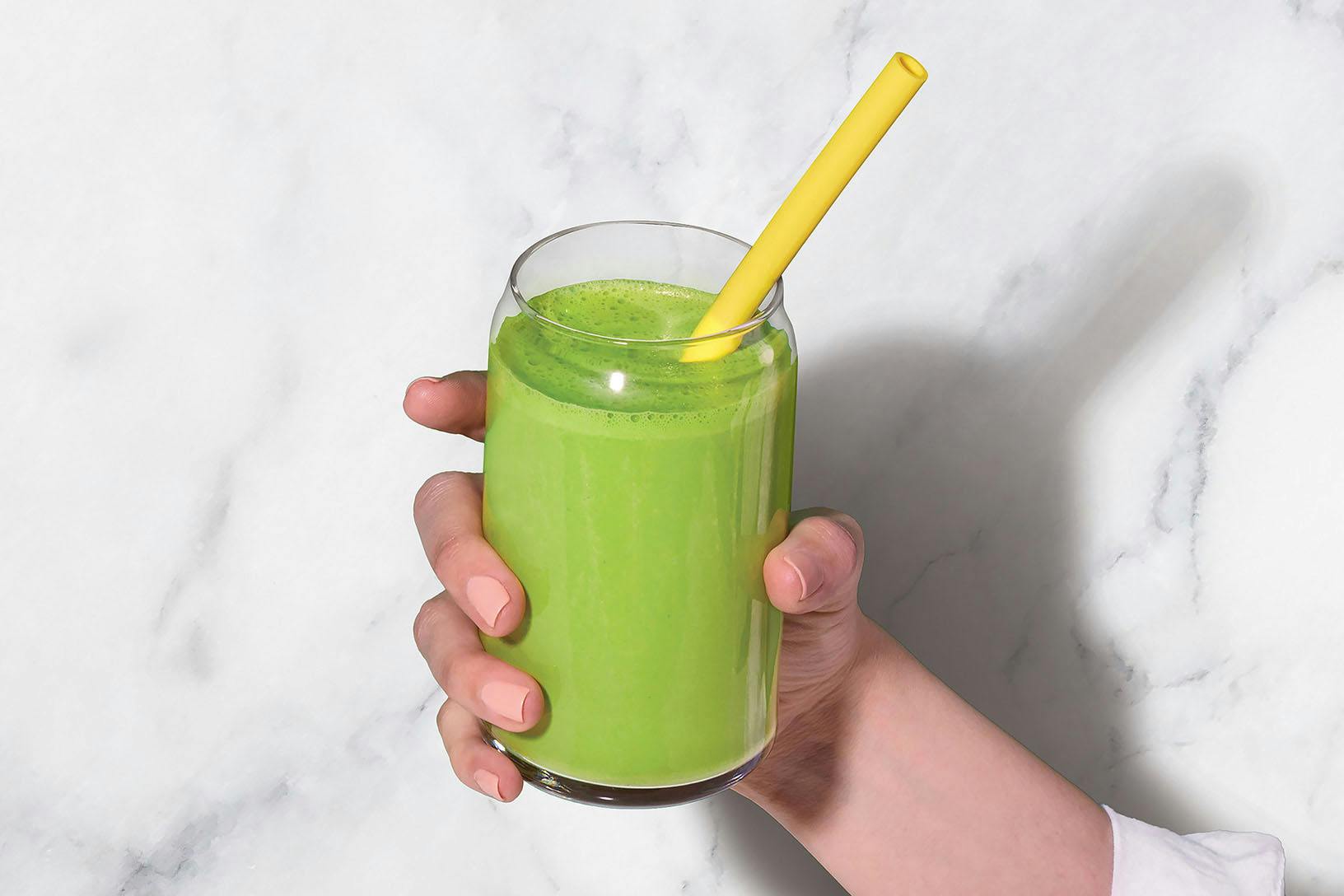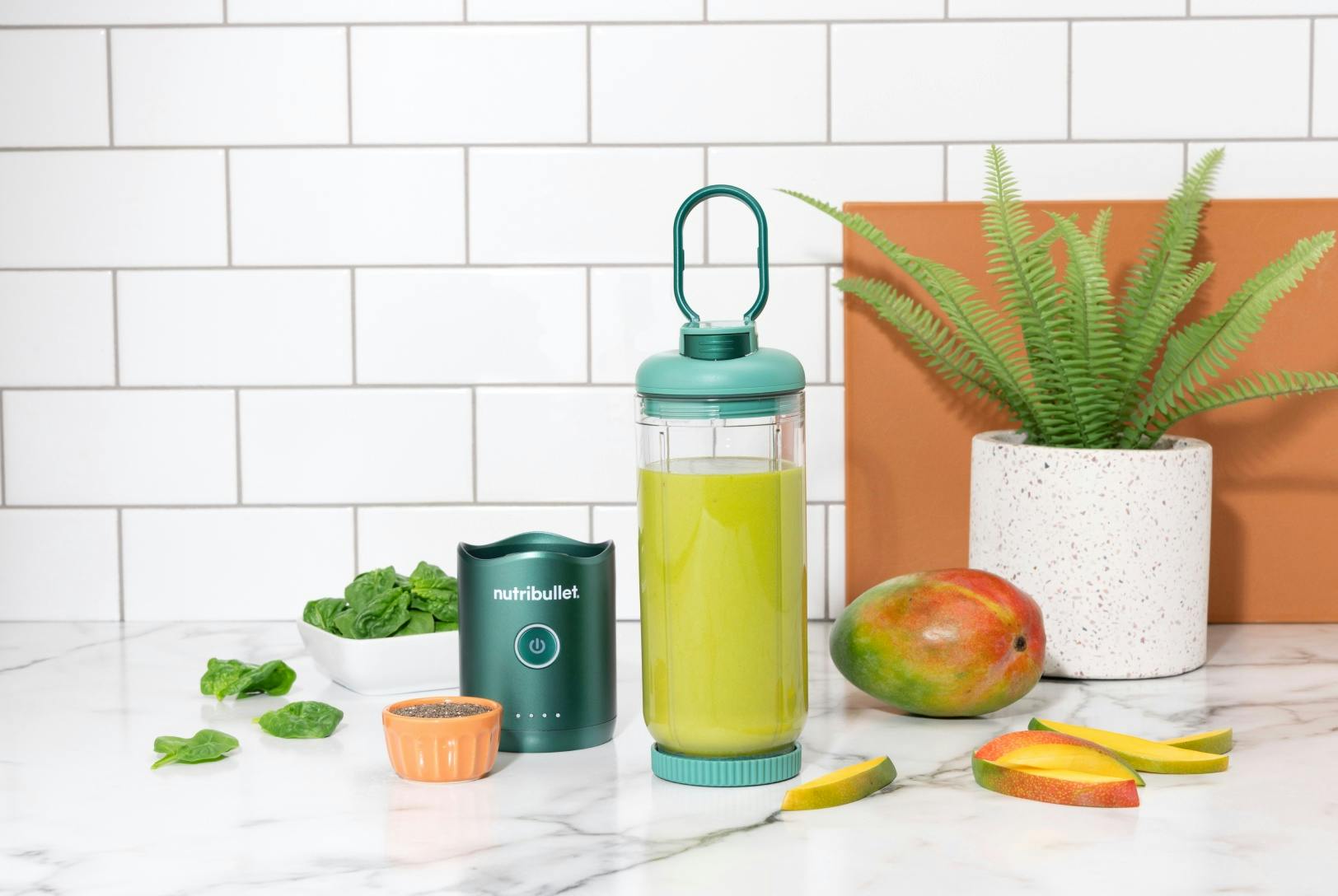FREE shipping on US orders over $45!
Your cart is empty!
FREE 1-year warranty on all blenders and juicers
More to Consider
nutribullet Pro 900
$98.99
nutribullet
$59.99







Taxes and discounts calculated at checkout.

McKenzie Jones
April 11, 2025
McKenzie Jones
McKenzie is Registered Dietitian Nutritionist for nutribullet who aims to make the world a healthier, happier place. She believes that living a healthy lifestyle and eating for your health isn't meant to be complicated -- it's meant to be simple, enjoyable, and judgment-free (with room for dessert). When she’s not dishing out nutrition tidbits, you can find McKenzie visiting her local farmers market, hiking her favorite trails with her husband, and chasing after her daughters.
Want a smoothie with staying power? Protein is just the beginning. Follow our tips for balancing protein, healthy fats, and fiber in every sip.
Smoothies are kind of the superheroes of the food world—quick, tasty, and ready to save the day at breakfast, snack time, or after a workout. But just like their caped counterparts, smoothies, too, can crash and burn (or cause you to) if they’re not fully prepared for the task.
So how do you make sure your smoothie delivers quality nutrition that will fuel you up for the long haul? By making sure it’s got the perfect balance of three key elements: quality protein, healthy fats, and fiber-rich carbohydrates.
Let’s break each of these down—and help you build a smoothie that keeps you energized and satisfied.
Protein is a major topic of conversation these days, and for good reason! Well-documented for its role in post-workout muscle repair and growth, this macronutrient is also essential for supporting your immune system and keeping you full. Including a good source of protein in your smoothie will help regulate blood sugar and promote satiety.
Good sources of smoothie-friendly protein include:
Healthy fats help with nutrient absorption (especially fat-soluble vitamins A, D, E, and K) and hormone production, and also promote satiety, or the feeling of fullness. They also add richness, creaminess, and depth of flavor to your blends.
Top sources of healthy fats for smoothies:
About 1–2 tablespoons of these plant-based fat sources is enough to load up on all their flavor and nutritional benefits.
Carbohydrates often get a bad rap, but whole, fiber-rich carbs are vital for brain function and energy. Fiber helps regulate digestion and prevents blood sugar spikes.
Best carb choices for smoothies:
Tip: Keep it naturally sweet. While fruit adds natural sweetness, many store-bought smoothies or smoothie bars go overboard with added sugar—think flavored yogurt, sugar-sweetened liquids, sweeteners, or syrups. Opting for whole fruits over concentrated sweeteners gives you deliciousness without the energy dip.
A truly satisfying smoothie is more than just fruit and ice—it’s a blend of protein, healthy fats, and fiber-rich carbs. When balanced correctly, smoothies can support your energy, digestion, and nutrition goals—without leaving you hungry or jittery.
Next time you blend up a smoothie, remember: build it like you would a balanced meal. Your body will thank you.

Is there such a thing as a perfect smoothie? This sweet medley certainly makes a strong case. With a classic combination of blueberries, banana, and spinach, this superstar smoothie provides a powerful nutrient boost!

Consider this blend the little black dress of nutribullet smoothies: it never goes out of style. To help keep your energy stable throughout the day, aim to balance your meals and snacks with high-quality protein, healthy fats, and fiber-filled carbs – like this combo of Greek yogurt, peanut butter, fruit, and veggies. There’s a reason this one is always on-trend.

Start your day on a high note with this nutritiously cheerful blend of greens, mango, banana, and chia seeds.